Abstract
The combined effect of immune lymphocytes (lymphnode cells or blood lymphocytes) and serum from tumor-bearing donors was assessed in four tumor systems with the use of the colony inhibition assay: (a) Moloney virus-induced sarcomas in mice, (b) Shope papillomas in rabbits, (c) spontaneous mammary carcinomas in mice, and (d) two adenocarcinomas of the colon and two adenocarcinomas of the lung in humans. The neoplasms studied had previously been shown to possess tumor-specific antigens, against which cellular immunity could be detected in vitro. In all four systems, it was found that sera from hosts with progressively growing neoplasms could abrogate the inhibitory effect of lymphocytes which were immune to the specific antigens of the corresponding tumor type. Studies with Moloney sarcomas, in particular, showed that the serum effect had at least some degree of specificity.
Full text
PDF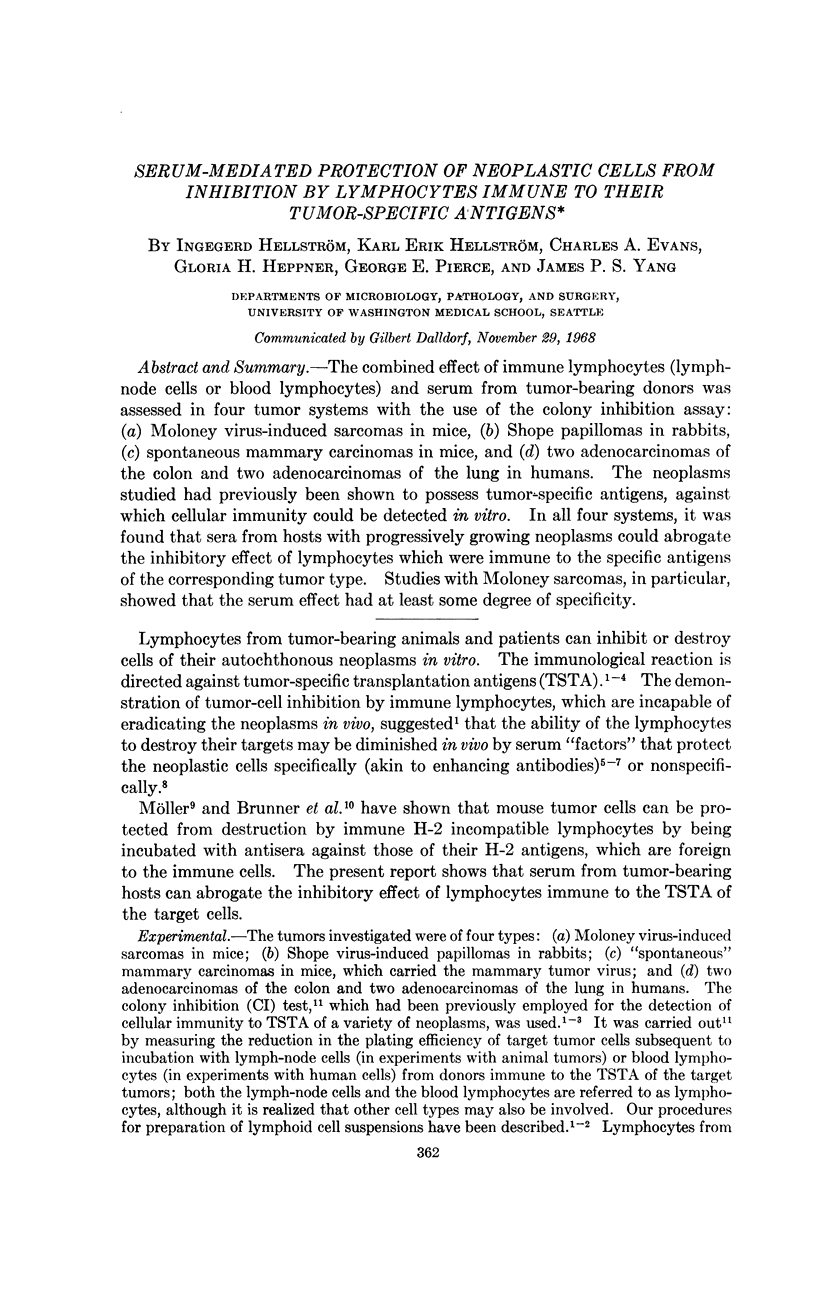

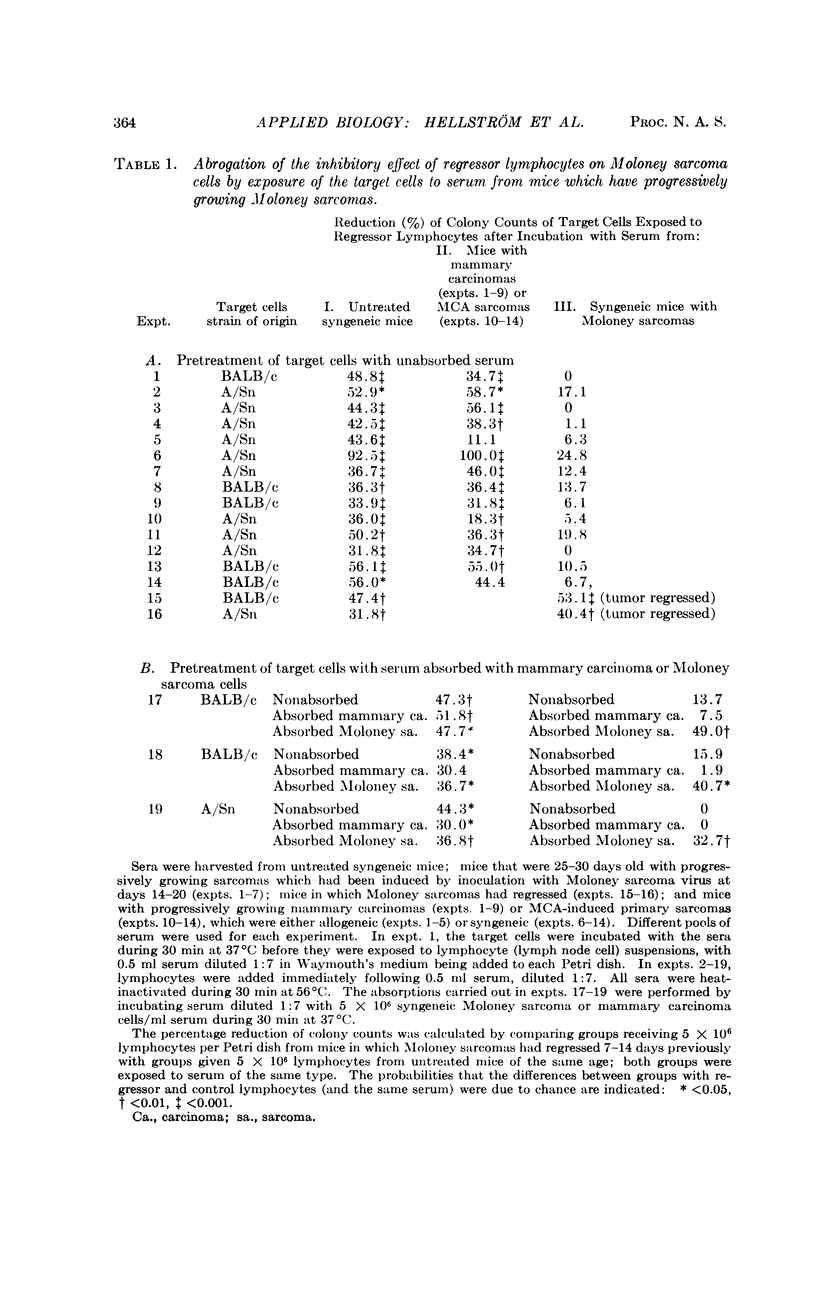
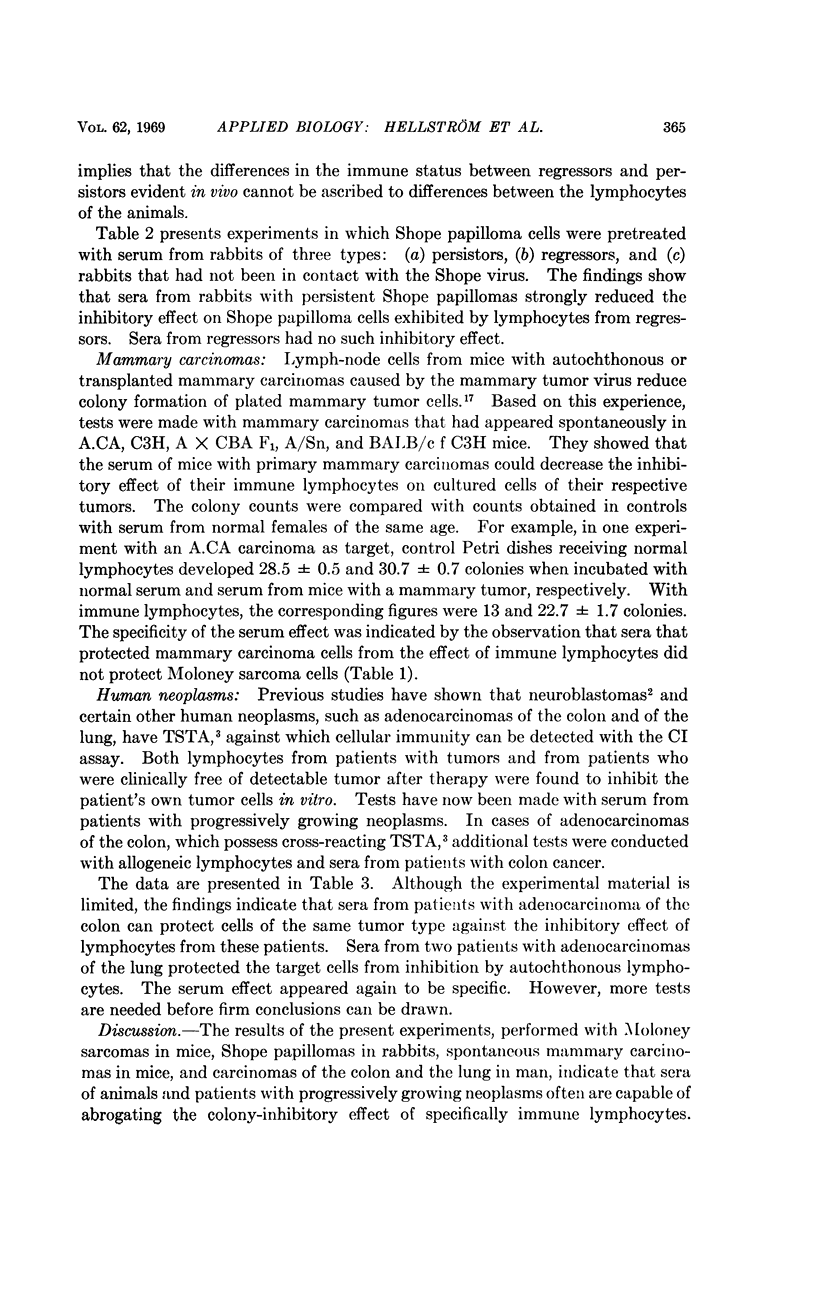
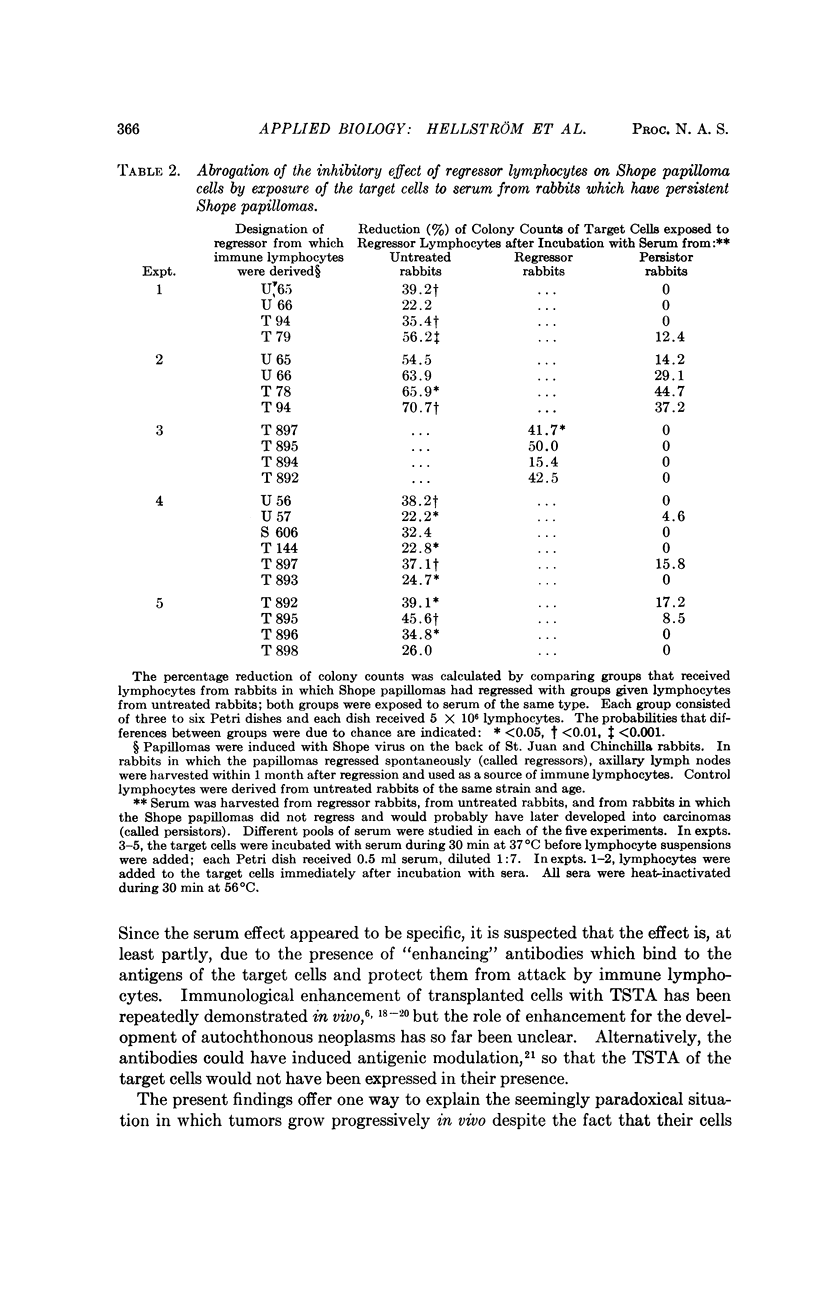
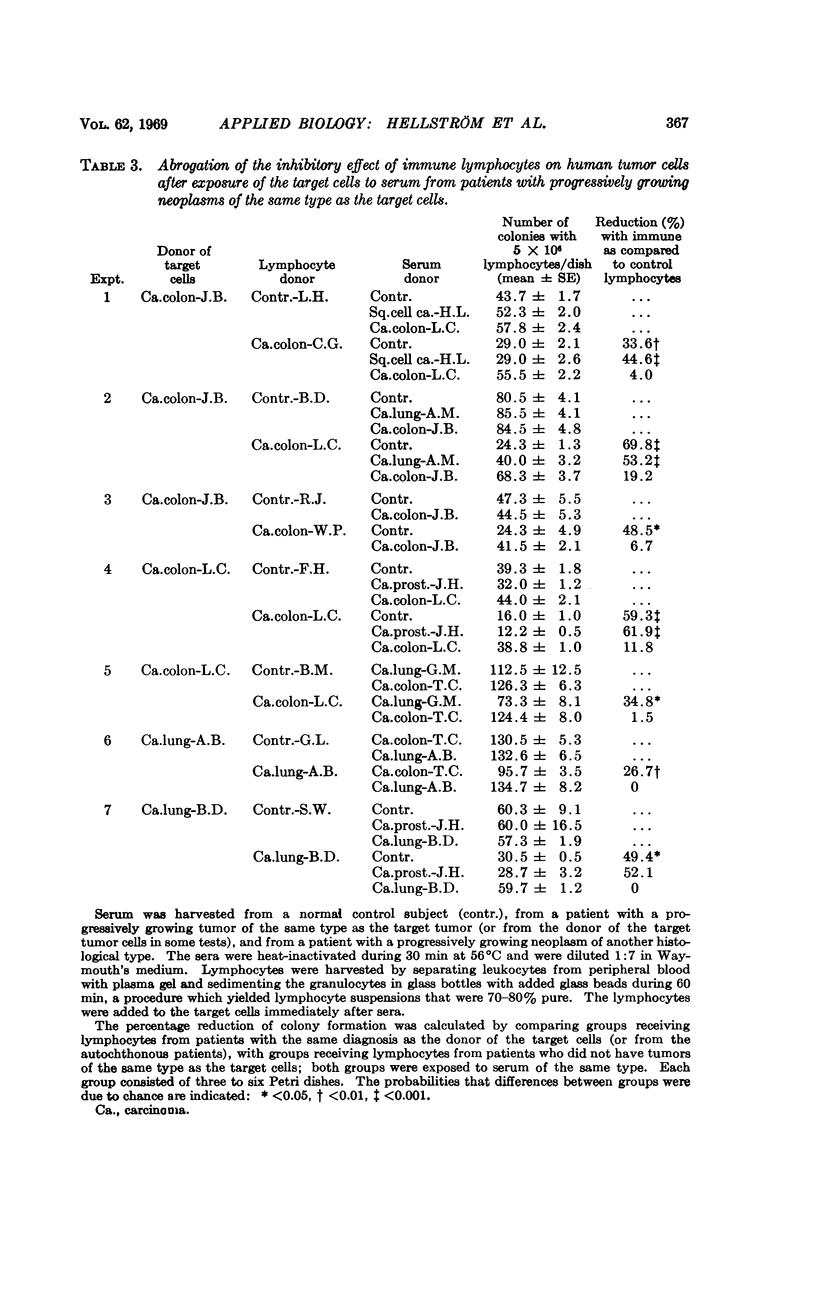

Selected References
These references are in PubMed. This may not be the complete list of references from this article.
- Batchelor J. R. The use of enhancement in studying tumor antigens. Cancer Res. 1968 Jul;28(7):1410–1414. [PubMed] [Google Scholar]
- Bloch K. J. Heterogeneity in biologic functions of antibodies: implications for immunologic tumor enhancement. Fed Proc. 1965 Sep-Oct;24(5):1030–1032. [PubMed] [Google Scholar]
- Brunner K. T., Mauel J., Cerottini J. C., Chapuis B. Quantitative assay of the lytic action of immune lymphoid cells on 51-Cr-labelled allogeneic target cells in vitro; inhibition by isoantibody and by drugs. Immunology. 1968 Feb;14(2):181–196. [PMC free article] [PubMed] [Google Scholar]
- Bubeník J., Koldovský P. Factors influencing the induction of enhancement and resistance to methylcholanthrene-induced tumours in a syngenic system. Folia Biol (Praha) 1965;11(4):258–265. [PubMed] [Google Scholar]
- Evans C. A., Ito Y. Antitumor immunity in the Shope papilloma-carcinoma complex of rabbits. 3. Response to reinfection with viral nucleic acid. J Natl Cancer Inst. 1966 Jun;36(6):1161–1166. [PubMed] [Google Scholar]
- Fefer A., McCoy J. L., Glynn J. P. Antigenicity of a virus-induced murine sarcoma (Moloney). Cancer Res. 1967 May;27(5):962–967. [PubMed] [Google Scholar]
- Fefer A., McCoy J. L., Perk K., Glynn J. P. Immunologic, virologic, and pathologic studies of regression of autochthonous Moloney sarcoma virus-induced tumors in mice. Cancer Res. 1968 Aug;28(8):1577–1585. [PubMed] [Google Scholar]
- Hellström I. E., Hellström K. E., Pierce G. E., Bill A. H. Demonstration of cell-bound and humoral immunity against neuroblastoma cells. Proc Natl Acad Sci U S A. 1968 Aug;60(4):1231–1238. doi: 10.1073/pnas.60.4.1231. [DOI] [PMC free article] [PubMed] [Google Scholar]
- Hellström I., Hellström K. E., Pierce G. E. In vitro studies of immune reactions against autochthonous and syngeneic mouse tumors induced by methylcholanthrene and plastic discs. Int J Cancer. 1968 Jul 15;3(4):467–482. doi: 10.1002/ijc.2910030408. [DOI] [PubMed] [Google Scholar]
- Hellström I., Hellström K. E., Pierce G. E., Yang J. P. Cellular and humoral immunity to different types of human neoplasms. Nature. 1968 Dec 28;220(5174):1352–1354. doi: 10.1038/2201352a0. [DOI] [PubMed] [Google Scholar]
- MOLLER G. EFFECT ON TUMOUR GROWTH IN SYNGENEIC RECIPIENTS OF ANTIBODIES AGAINST TUMOUR-SPECIFIC ANTIGENS IN METHYLCHOLANTHRENE-INDUCED MOUSE SARCOMAS. Nature. 1964 Nov 28;204:846–847. doi: 10.1038/204846a0. [DOI] [PubMed] [Google Scholar]
- McCarthy R. E., Coffin J. M., Gates S. L. Selective inhibition of the secondary immune response to mouse skin allografts by cell-free Ehrlich ascites carcinoma fluid. Transplantation. 1968 Aug;6(5):737–743. doi: 10.1097/00007890-196808000-00006. [DOI] [PubMed] [Google Scholar]
- OLD L. J., BOYSE E. A. IMMUNOLOGY OF EXPERIMENTAL TUMORS. Annu Rev Med. 1964;15:167–186. doi: 10.1146/annurev.me.15.020164.001123. [DOI] [PubMed] [Google Scholar]
- Old L. J., Stockert E., Boyse E. A., Kim J. H. Antigenic modulation. Loss of TL antigen from cells exposed to TL antibody. Study of the phenomenon in vitro. J Exp Med. 1968 Mar 1;127(3):523–539. doi: 10.1084/jem.127.3.523. [DOI] [PMC free article] [PubMed] [Google Scholar]


